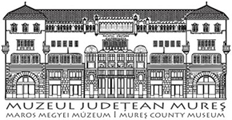Marisia - Maros Megyei Múzeum Évkönyve 32/2. (2012)
Articles
A Perished Medieval Settlement in Udvarhelyszék 163 same disturbed tomb. In Transylvania it is not common to place this many hair rings into a grave. Similarly, eight pieces were recovered from a site in Alba Iulia-Sfafz'a de salvare, (nothing has yet been published about those graves, the artefacts were brought to our attention by Erwin Gáli) 7 pieces were recovered from a single tomb in Zábala (Székely 1995, 277-305), 6 pieces turned up at Cluj-Mänästur in grave number 17 (Gall et al. 2010, 143-144), and respectively number 130 (Gall et al. 2010,158). 6 pieces are also known to have been recovered from Dábáca (Gall 2011, 351. grave, 112). As such, we can find examples of hair rings appearing in larger numbers in the same grave in 11th— 12th century Transylvanian cemeteries. The only nearby place where hair rings were found in large numbers was the excavation of the Saint Peter and Paul Church in $umuleu. Three bronze and one silver hair rings with S-shaped endings, two of which were ribbed, had been recovered from the 10 graves here. Radiocarbon dating done on the remains from these tombs suggest they date back to 1208-1270 but the worn-out state of the hair rings may indicate they were used for a long time (Botár 2008, 26). In the area, graves containing coins and hair rings dating back to the 12th century can be found at Avrämesti (Benkő 1992, 223, graves 17-18), Peteni (Székely 2001, 205, grave 206, and Zábala (Székely 1995,280, 283, graves 37; 53 and 154). The hair rings found by us in secondary position do not allow a more accurate dating but, the possibility of these dating back to the 12th century cannot be excluded as the settlement already existed in that period. The other artefacts are connected to the village’s later period. In grave number 10 we found, also in secondary position, a silver dinar with the crown on one side and an angel on the other, minted under Louis I of Hungary (1346-1349) (C.N.H. II. 79.6, Unger 1980, 419). During the clearing of grave number 6, in the middle section we found an iron belt buckle which also dates back to the 14th-15th centuries. Inside trench 2, beneath the graves we reached the dark brown clayey sub-humus which contained Bronze Age pottery fragments. During the excavation we found a negative area, a strip of about 1.5 m, in line with the arch, which did not contain any graves. This could be explained when we studied the connection between the arch and the wall of the nave (PI. 3/7). Here there was an obvious wall separation which resulted from the fact that the choir’s wall was connected only later on to an older segment of the church’s wall, extending it toward the east (Nyárádi-Sófalvi 2007, 20). The earlier wall segment was presumably part of the church from the age of the Árpád dynasty. The foundation of this was made with just stones, without any mortar. A church, dating back to the age of the Árpád dynasty, having a similar foundation has been excavated in Tomesti (Botár-Tóth 2004, 276). The depth of the foundation barely reached 50 cm. The shallow foundation also offers an explanation for the area without graves, as this is where the previous, supposedly straight choir sat, and the excavated graves were arranged according to this building (PL 4). During the excavation of the church two distinct phases were separated, the first of which, according to the materials uncovered dates back to the 13th century. During its second phase, it was extended toward the east with a choir, without any pillars. The facts that no stone carvings were found, there was not even a wooden plank floor and even the clay floor was present only inside the choir, point to the conclusion that this was a poor rural community. Besides all this, the fresco fragments which once decorated the walls of the Árpád age church indicate some degree of sophistication.
